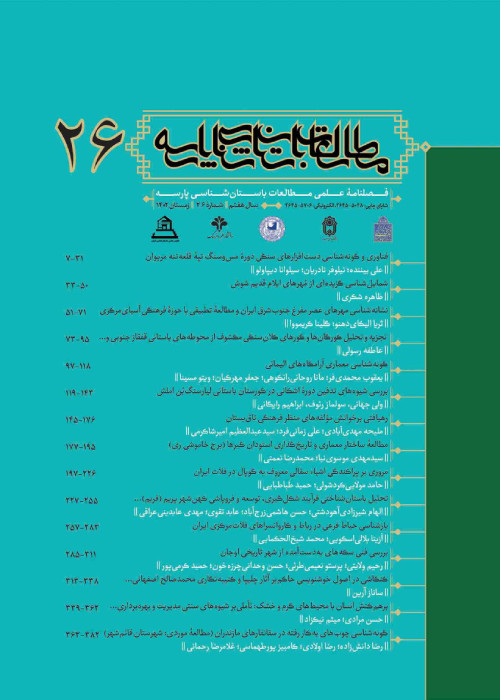Achaemenid Water Structures in the Catchment Area of Pelvar River - Pasargad District
Providing water for the inhabitants of the plateau of Iran, which is located in the arid and semi-arid region of the earth, has always been one of the most important challenges for the its people since the beginning of the formation of the first dynasties and establishing the first irrigation systems. Low rainfall climate has caused the Iranian people to innovate different techniques to provide water for agriculture activities permanently. Iranians are considered as the main creators of Kariz (subground aqueduct) as one of the most practical methods of exploiting underground water resources. Exploitation of running water resources by construction of dams on rivers and springs and the creation of canals is another method rooted in the history of the civilizations of the west Asia for supplying more sustainable water for the agricultural and industrial functions. In the specific and under investigation area of the Pulvar River, where the Achaemenid capital of Pasargadae is located, there are some of the ancient water structures including dams, artificial waterways, canals, extensive water reservoirs and springs. Of theses the dams are mostly built on the tributaries of the Pulvar River, and the water supplying canals are located below them. Such complex structures have been built in the plains and districts surrounding Pasargadae such as Didegan, Murghab, Sarpiran, Kamin and Arsanjan. The present investigation briefly introduces these water structures and the techniques they were made in the Achaemenid period in the cultural landscape of Pasargadae. The results of this research are based on the studying historical documents and field studies of the past decades by historians and archaeologists, as well as field surveys by the author during the recent years in an area of nearly 16,000 square kilometers. The results of this research are amazing and very impressive. These extensive water systems, with the tact and intelligence of Achaemenid managers and engineers, have supplied water to all the plains and mountain valleys of the Pasargadae region. Villages and public settlements, gardens, agricultural lands, government buildings and centers, and finally the Royal Paradise of Cyrus the Great used of the benefits of water supply structures. In the construction of the dams, clay materials and ashlar or carved stone masonries have been applied, and some of them also have architectural structures with cut stone blocks. Waterways are also created in several ways on the slopes of hills and rocks. Studies and researches show that the construction of water structures in the study area began during the reign of Cyrus the Great and expanded during the reign of Darius the Great and continued to develop until the end of the Achaemenid period. This method of exploiting surface of sub ground water resources continues to post-Achaemenid periods, especially in the Sassanid era and continues till modern times.
- حق عضویت دریافتی صرف حمایت از نشریات عضو و نگهداری، تکمیل و توسعه مگیران میشود.
- پرداخت حق اشتراک و دانلود مقالات اجازه بازنشر آن در سایر رسانههای چاپی و دیجیتال را به کاربر نمیدهد.



